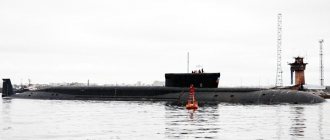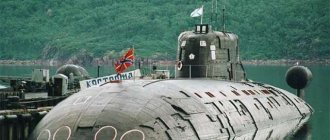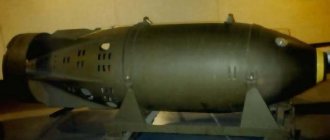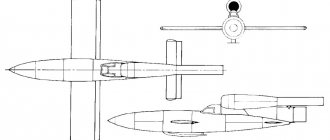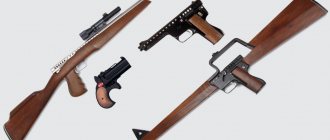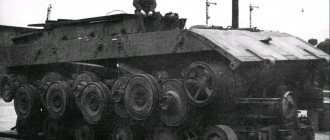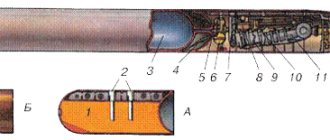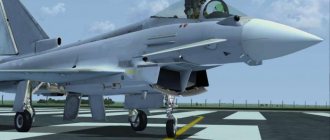Submarines today belong to the class of warships, and in wartime they are part of the armed forces of world powers. And this is not surprising, because their main purpose is to conduct covert operations aimed at destroying enemy ships. However, in practice, submarines are also used for search and exploration purposes. Depending on their purpose, they differ in their parameters in terms of speed, size and other characteristics.
Submarine "Shark"
For example, the largest submarine in the world is the Project 941 Akula, owned by the Russian Navy. The length of the vessel is 172 m, width – 23.3 m, and height – 25 m. If we talk about high-speed models, then below is a rating of the fastest submarines.
Current state of affairs
Currently, all submarines of this series are in service and serve in the Pacific and Northern fleets. The above-mentioned Nerpa is in service in the Indian Navy and, according to the terms of the contract, will remain there until 2020. It is possible that after this the Indians will prefer to extend the contract, since they highly appreciate the combat qualities of the Russian submarine.
Today, when the fleet begins to gradually recover after the 90s, there is already talk that fifth-generation nuclear submarines should be based specifically on the developments of Project 971, since ships of this series have repeatedly proven their promise. The “Pikes” themselves correspond in their parameters to fourth-generation submarines. An indirect confirmation of this is the fact that they repeatedly deceived the SOSUS sonar detection system, which at one time created many problems for Soviet sailors.
Trafalgar submarines, UK
The maximum speed under water is 32 knots (59.26 km/h).
Trafalgar is a modern British missile and torpedo submarine. Between 1979 and 1991, 7 modern ships were designed and built. By 2020, 4 Trafalgar submarines were part of the British Navy, and three vessels had already been decommissioned.
Submarine Trafalgar, UK
A complete replacement and modernization of the submarines was planned for 2023. However, in 2020, information appeared about a malfunction in the reactor of one Trafalgar model, and it was decided to temporarily decommission all 4 boats for modernization.
About cases of appendicitis at sea...
At the end of February of the same 1996, an anecdotal incident occurred. At that time, large-scale NATO fleet exercises were taking place. The order of anti-submarine ships had just managed to contact the command and report the absence of potential enemy submarines along the convoy's route... A few minutes later, the commander of the Russian submarine contacted the British ships. And soon the “hero of the occasion” herself appeared in front of the stunned British sailors.
The crew reported that one of the sailors was in serious condition due to a burst appendicitis. In the conditions of a submarine, the success of the operation was not guaranteed, and therefore the captain made an unprecedented decision to communicate with foreign colleagues. The patient was quickly loaded onto an English helicopter and sent to the hospital. It is difficult to imagine how the British sailors, who had just reported the absence of enemy submarines, felt at that moment. What’s even more interesting is that they weren’t able to spot the Project 971 boat of the old series! Since then, Project 971 Shark has been deeply respected by the British Navy.
How did you manage to reduce the noise level?
In addition to the special screws, which we have already mentioned several times, special shock absorption systems are used. Firstly, all mechanisms are installed on special “foundations”. Secondly, each zone block has another shock absorption system. This scheme made it possible not only to significantly reduce the volume of noise generated by the submarine, but also to additionally protect the crew and equipment of the submarine from the action of shock waves generated during explosions of depth charges. So our fleet, for which submarines have almost always been the main striking force, received a weighty “argument” for deterring a potential enemy.
Like all modern submarines, the “Pikes” have a developed fin with a prominent bulge, which houses a towed antenna of the radar complex. The peculiarity of the plumage of these boats is that it is made as if integral with the power elements of the main hull. All this is done in order to minimize the number of turbulences. The latter can put enemy hydroacoustics on the trail of the ship. These measures have borne their legitimate fruit: the “Pikes” are considered the most inconspicuous underwater vessels to date.
History of creation
The decision to develop a mass series of third-generation multipurpose submarines was made in July 1976. The boat was designed by SKB-143 Malachite. Until 1997, the work was led by the chief designer G. N. Chernyshev, after his death - Yu. I. Farafontov. The technical specifications were left the same as those of Project 945 “Barracuda”, the work of the Lazurit Central Design Bureau, and the design was carried out on its basis, so work was not carried out at the preliminary design stage. Unlike the Barracuda, the boat’s hull was supposed to be made not of titanium, but of low-magnetic steel. This proposal was made by shipbuilders from Komsomolsk-on-Amur. This requirement was due to both the shortage and high cost of titanium, and the difficulties in working with it, which could only be overcome by one Soviet enterprise, Sevmash, as well as the Gorky enterprise Krasnoye Sormovo, whose capacity was clearly insufficient for the construction of a large series in a fairly short time deadlines. At the same time, replacing titanium with steel made it possible to use the increased capacity of Far Eastern factories. On September 13, 1977, the technical design was approved, but due to the construction in the United States of a new type of Los Angeles submarine with a new generation of hydroacoustic systems, the Shchuka-B was sent for revision.
The improved project was ready by 1980. The first part of the series was built in Komsomolsk-on-Amur, which was caused by the increased level of production and technical potential of the Far Eastern shipyards.
In the early 1980s, the Soviet Union purchased a batch of high-precision metal-cutting machines from Japan, which made it possible to use new technologies in the processing of propellers, which sharply reduced the noise of submarines. The deal was secret, but information about it reached the world press. As a result, the US imposed economic sanctions against the company.
Project 971 boats received the code name “Akula” in NATO countries. Later, the project was improved several times, and boats built according to the modified designs received the code names “Improved Akula” in the West; project 971M corresponds to the designation “Akula-II”. The last of the boats built, K-335 “Gepard”, the embodiment of the latest technical achievements, is called “Akula-III” in the West.
Submarine "Barracuda", USSR (RF)
Maximum speed under water, 35.15 knots (65.1 km/h).
The Barracuda is a type of Soviet submarine built between 1979 and 1986. The Barracudas served as the prototype for the Shchuka and Shchuka-B submarines, the latter of which are today considered the backbone of Russia's submarine forces.
Submarine "Barracuda", USSR
The Barracuda's body is made of titanium and is divided into 6 compartments equipped with water protection. The submarine also has a rescue capsule, which, if necessary, can accommodate the entire crew.
A total of two submarines were built in the Barracuda series: B-239 Karp and B-276 Crab. Until 2020, it is planned to improve these models according to a new project. In 2014, a modernization contract was signed, after which the Barracuda submarines will remain in the Russian Navy for at least 10 years.
"Semi-combat" work
During NATO's aggression against Serbia in 1996, the K-461 "Wolf" was on combat duty in the Mediterranean Sea. American hydroacoustics managed to detect its location while passing through the Strait of Gibraltar, but our submariners managed to escape from them. It was possible to re-discover the “Wolf” only directly off the coast of Yugoslavia. In this military campaign, the nuclear submarine protected the domestic aircraft carrier Admiral Kuznetsov from potential aggressive actions of “Western partners.” At the same time, the “Wolf” carried out covert surveillance of six NATO nuclear submarines, including one boat of the “competing” type “Los Angeles”.
In the same year, another “Pike-B”, under the command of A.V. Burilichev, was on combat duty in the waters of the Atlantic. There, the crew discovered a US Navy SSBN and then secretly accompanied the ship throughout its combat duty. If it had been a war, the American missile carrier would have sunk. The command understood all this very well, and therefore Burilichev immediately after the “business trip” received the title of Hero of the Russian Federation. This is another evidence of the high combat qualities and stealth of any Project 971 boat.
Number of episodes
A total of 86 boats of all series were built, including
:
| Project | Year | Quantity |
| Series III | 1932 | 4 boats |
| Series V | 1933 | 12 boats |
| Series V-bis | 1933 | 13 boats |
| Series V-bis-2 | 1933 | 14 boats |
| Series X | 1935 | 32 boats |
| Series X-bis | 1938 | 11+2 boats |
Some "Pikes" were completed only after the war. Boats of the "Shch" type served in four USSR fleets and had three-digit numbers, where the first digit indicated membership in the fleet
:
- "Shch-1xx" - Pacific Fleet,
- "Shch-2xx" - Black Sea Fleet,
- "Shch-3xx" - Baltic Fleet,
- "Shch-4xx" - Northern Fleet.
Stages of construction of new nuclear submarines "Pike"
The situation that developed at sea in the mid-80s forced the country's top naval leadership to make every effort to increase the combat capability of the ocean-going submarine fleet. Tasks aimed at reducing noise levels and increasing the firepower of submarines formed the basis of the new project. The first submarine received serial number No. 501 and was laid down at the shipbuilding plant named after. Lenin Komsomol in Komsomolsk-on-Amur. In the summer of 1984, the ship was launched and entered service in the new year of 1985.
All subsequent ships of the new series, the Shchuka-B multipurpose submarines of Project 971, were simultaneously built at two shipyards in the country, in Komsomolsk on the Amur and at Sevmash in Severodvinsk. A total of 15 ships were launched, of which 8 became part of the Pacific Fleet, and the other 7 formed the strike core of the Northern Fleet.
The first ship of the series, the Akula submarine, showed unique results already on its first voyage. In terms of underwater noise, the Soviet submarine surpassed its direct competitor, the American Los Angeles-class nuclear submarine.
https://youtube.com/watch?v=oJZO2Pbiwgo
Project 971, according to the Western classification "Akula -II", became an unpleasant surprise for the American naval forces. From now on, American attack submarines and missile carriers could not freely sail near Soviet shores. Every movement of a potential enemy submarine was controlled by the new Soviet pikes.
At the government level, it was decided to give the new ships names similar to the names of Soviet cities. For example, the sixth nuclear submarine of the Shchuka-B type received the name Magadan after launching. However, three years later the submarine received a new name, K-331 Narwhal. The ship sailed with this name until January 2001.
All nuclear submarines of the Shchuka-B type commissioned in the Far East as part of the Pacific Fleet were named after the names of Russian cities. So, after the Akula boat, the lead ship of Project 971, the Far Eastern shipbuilders followed the Barnaul nuclear submarine and in 1989 the Bratsk nuclear submarine. Then it was the turn of the nuclear-powered icebreaker Magadan, which was launched in December 1990. After the collapse of the Soviet Union, already in 1992, the Kuzbass multi-purpose submarine entered service with the Pacific Fleet. Laid down in 1993 on a slipway in Komsomolsk on the Amur, the K-419 Samara submarine was already being completed to replace the Soviet era. The submarine entered service in July 1995.
Having received the first real confirmation of the correctness of the chosen technical solutions as a result of the implementation of Project 971, the construction of submarines of the Shchuka-B type began actively at the Severodvinsk Machine-Building Enterprise. Sevmash became home to most Soviet nuclear-powered ships. The fate of the second series of Project 971 boats, assembled at the Sevmash shipyards and commissioned by the Northern Fleet, was no exception.
2.3. Submarines "Condor", USSR (RF)
The maximum speed under water is 35 knots (64.82 km/h).
"Condor" are ships built in the Soviet Union and today are part of the Russian Navy. The main goal is to track enemy submarines and aircraft carriers, as well as eliminate them during the onset of hostilities.
Submarine "Condor", USSR
The Condor submarines are modernized Barracuda-class submarines. Titanium also remained the main material during construction, and, thanks to the modernized hull, the Condor submarines became the quietest in the USSR Navy. From 1982 to 1993, 2 Condor submarines were put into operation: Pskov and Nizhny Novgorod. In 2020, they are also included in the ranks of the Russian Northern Fleet.
In 2020, the Pskov submarine was undergoing repairs, as a result of which it was possible to extend its service life.
The continuity of generations
Initially, all boats in this series had only an index, without being designated by proper names. But in 1990, K-317 received the name “Panther”. It was given in honor of the submarine of the Russian Empire, which was the first to open a combat account. Subsequently, the “birthday girl” was the Project 971 Tiger nuclear submarine. Soon, all submarines of this family also received proper names, echoing the designations of ships that were part of the Imperial and Soviet Navy. The only exception is Project 971, Kuzbass. Previously, this ship was called "Walrus". At first it was named in honor of one of the first submarines of the Empire, but later they honored the memory of Soviet sailors.
But the most significant were the nuclear submarines produced at Sevmash. Their entire series received the code name “Bars”. For this, all submarines of the project received the nickname “cats” in the West.
Shan Submarines, China
Maximum speed under water is 30 knots (55.56 km/h).
"Shan" are modern Chinese submarines, their construction took place between 2005 and 2010. First of all, the new project was developed to strengthen the Chinese Navy, since the Han submarines that were dominant at that time did not compete with enemy boats.
Submarine "Shan", China
Therefore, the main goal of the designers was to eliminate the shortcomings of the outdated model: reducing noise and increasing the weaponry on the ship. The first model of the Shan project was accepted into the ranks of the Chinese Navy in 2007, and by 2020 there are 3 submarines in the armed forces. In total, the project includes 10 submarines.
Submarine dimensions and crew
The ship's surface displacement is 8,140 tons, and its underwater displacement is 10,500 tons. The maximum length of the hull is 110.3 m, the width does not exceed 13.6 m. The average draft on the surface is close to ten meters.
Due to the fact that various solutions for complex automation of its control were massively applied in the design of the boat, the crew was reduced to 73 people compared to the American 143 crew members (on the Los Angeles). If we compare the new “Pikes” with previous varieties of this family, the living and working conditions of the crew have been significantly improved. By reducing the number of the latter, it also became possible to place people in the two most protected compartments (living).
Comparative characteristics of “Barracuda” and “Los Angeles”
For comparison and a detailed study of the parameters of submarines, below are the characteristics of the 2 fastest submarines of the Russian and US Navy. For convenience, the comparison is presented in table form.
Barracuda
- Surface speed - 12.1 knots
- Underwater speed - 35.15 knots
- Dive depth - 480 m
- Vessel autonomy - 100 days
- Crew - 61 people
- Vessel length - 107.16 m
- Vessel width - 12.28 m
- Armament - torpedo-mine, air defense
Los Angeles
- Surface speed - up to 17 knots
- Underwater speed - 30-35 knots
- Immersion depth - 250-280 m
- Vessel autonomy - 80 days
- Crew - 141 people
- Vessel length - 109.7 m
- Vessel width - 10.1 m
- Armament - torpedo-mine, missile
Having studied the table, we can conclude that in order to evaluate and compare submarines, a comprehensive study of their parameters and characteristics is required. The record speed of a vessel does not guarantee a leading position “on the water”; on the contrary, it often leads to problems and additional modernization.
The significance of the Shchuka-B project for our country
The appearance of the Project 971 nuclear submarine confused all the cards for the Americans. Before this, they quite rightly considered their offensive surface forces to be the strongest in the world, and the Soviet fleet, which had significantly fewer surface ships, was rated rather low by their experts. “Pikes” have reached a completely new level of play. They can safely work even deep behind enemy lines, going beyond anti-submarine defense lines. In the event of a full-scale war, not a single command center is immune from a nuclear strike from under water, and there is no point in talking about a full-scale cutting off of sea routes of communication.
Any offensive operation of a potential enemy in such conditions turns into an analogue of dancing on a minefield, and one can forget about the surprise of an attack. The US leadership is very worried about the Pike (especially the modernized ones). Already in 2000, they repeatedly made attempts to force a legislative agreement on severe restrictions on their use, but the interests of the Russian Federation do not favor such “mutually beneficial” agreements.
Weapon characteristics
The main striking force is four 533 mm missile and torpedo tubes. But four more 650 mm TA caliber units look much more impressive. In total, the submarine can carry up to 40 missiles and/or torpedoes. "Pike" can fire "Granat" and "Shkval" missiles, which are equally effective in submerged and surface positions. Of course, it is possible to fire conventional torpedoes and release automatic mines from torpedo tubes, which are independently placed in a firing position.
In addition, this submarine can also be used to lay down conventional minefields. So the range of weapons is very wide
When launching cruise missiles, their guidance and tracking occur in a fully automatic mode, without diverting the crew’s attention from performing other combat missions. Alas, in 1989, after the conclusion of extremely unfavorable agreements for our country with the Americans, Project 971 submarines went on combat duty without “Grenades” and “Whirlwinds”, since these weapons can carry a nuclear charge
Means of detecting enemy ships
The real highlight of the new Pike was the MGK-540 Skat-3 complex. It can not only filter out interference, but also independently detect the bearing of noise from the propellers of any ship. In addition, "Scat" can be used as a regular sonar when passing unfamiliar fairways. The detection range of enemy submarines has tripled compared to submarines of previous generations. In addition, "Skat" determines the characteristics of the pursued targets much faster and provides a forecast for the time of combat contact.
A unique feature of any Project 971 submarine is an installation that allows you to detect any surface ship by the wake it leaves. The equipment calculates the waves diverging from it even several hours after the ship passes in this square, which makes it possible to covertly monitor enemy ship groups at a safe distance from them.
How the new Project 971 Shchuki nuclear submarines were created
It should be noted that the idea of creating a submarine ship capable of effectively fighting the submarines of a potential enemy at sea appeared immediately after the entry into service of the American fleet of Los Angeles-class nuclear submarines. The submarines at the disposal of the Soviet fleet were not suitable for searching for enemy ships in the depths of the world's oceans. The main disadvantage of the second generation Soviet nuclear submarines was the high noise level of the underwater operation. This especially affected the combat effectiveness of Soviet nuclear submarines, which could no longer compete on equal terms with the 3rd generation submarines that appeared in foreign fleets.
Project 971 was a continuation of the practical implementation of the construction of titanium nuclear attack submarines of Project 945. The main goal of the project was to expand the scale of construction of cheaper multi-purpose submarines. The new project was based on the main components and assemblies of Project 945 submarines. Instead of a titanium hull, the new nuclear submarines were to have steel hulls of a similar shape, similar tactical and technical data, including autonomy and range. In terms of speed, diving depth and armament, Project 971 submarines should have had similar parameters. Particular emphasis in Project 971 was placed on significantly reducing the noise level of the boat. This factor was to play a key role in the subsequent operation of the new class of submarines.
The Project 971 submarine received the code "Pike-B", thereby repeating the glorious combat history of the "Pikes", medium-sized submarines of the Second World War. The design documentation provided for the construction of 3rd generation multi-purpose submarines in a large series, which were supposed to replace the obsolete Project 671 Shchuka-type boats in the fleet. The technical specifications for the new Shchuka appeared in the summer of 1976. A year later, the new submarine received its shape through the efforts of SKB-143 Malachite. This design bureau already had experience in building ocean-going submarines, so the “Gorky project” did not have to be adjusted to new factory conditions.
Notes
- See K-152 "Nerpa"
- . www.malachite-spb.ru. Retrieved April 28, 2020.
- ↑ Fedorov, Vyacheslav
. Fedorov Military Library (2000-2008). Retrieved March 13, 2008.
- ↑
- ↑ Mikhailov, Andrey
. Rosprom. Federal Agency for Industry. 06/21/2004 (PRAVDA.Ru, 06/16/2004). Retrieved March 13, 2008.
- Yu. V. Apalkov “Submarines” vol.1 part 2, “Galeya Print”, St. Petersburg, 2002
- Myasnikov, Victor
.
nvo.ng.ru
(07/07/2006). Retrieved March 14, 2008. - . www.malachite-spb.ru. Retrieved April 28, 2020.
- . militaryrussia.ru. Retrieved January 4, 2020.
- MILITARY PORTAL
. snariad.ru (2007). Retrieved March 16, 2008.
- ↑ . milrus.com / Russian submarines
. Ivan Ivanov (2005-2007). Retrieved March 16, 2008.
- . Website "Heroes of the Country".
- Project 671R submarines were the first to demonstrate this. See. lenta.ru
. Ilya Kramnik (09/08/2006). Retrieved March 16, 2008.
- [www.vlasti.net/news/25817 Will Russian “Pikes” break American networks? Whose submarine fleet is stronger today, vlasti.net, 10/17/2008]
- Submarina.Ru
(unavailable link). submarine.id.ru (2000-2008). Retrieved March 16, 2008.
- ↑ Polmar, Norman
(English).
Military Affairs in Congress - 1997
. Federal Association of Scientists (1997). Retrieved March 16, 2008. - . shipbuilding.ru
. Mechanical Engineering Portal (July 5, 2006). Retrieved March 10, 2008.
- (unavailable link). Red Star
. rosprom.gov.ru (03/20/2006). Retrieved March 14, 2008.
- . kazan.kp.ru. Retrieved June 3, 2011.
- ↑. lenta.ru (January 23, 2012). Retrieved January 23, 2012.
- Telmanov, Denis
. Izvestia (October 27, 2011). Retrieved October 28, 2011.
- (unavailable link). Retrieved March 14, 2008.
- ↑ FSUE "Rosoboronexport" according to Interfax-AVN
. vpk.name (September 5). Retrieved March 10, 2008.
- Nikolaev, A. S.
(). Retrieved March 10, 2008.
Representatives[edit | edit code]
In total, the project planned to build 25 ships[24]: 13 in Komsomolsk-on-Amur and 12 in Severodvinsk. In 1983-1993, 20 submarines were laid down, of which 14 were completed (seven at each plant); 10 of them are part of the Russian Navy, on the last of them, the K-335 “Gepard”, the flag was raised on December 4, 2001.[25]. Two submarines, Lynx and Cougar, were not completed, and the hulls were used in the construction of Project 955-955A, like the K-535 Yuri Dolgoruky and K-550 Alexander Nevsky; another one, K-152 Nerpa, was launched only in 2006 and was originally intended for leasing to India, as a result of which it had differences in the installed equipment. As of May 2011, the submarine was located in Bolshoy Kamen, where [26] is located. On April 4, 2012, at the Visakhapatnam base, the submarine was officially accepted into service with the Indian Navy[27].
Table colors:
White -
not completed or disposed of without being launched
Green -
operating as part of the Russian Navy
Yellow -
operating as part of foreign navies or as a civilian ship
Blue -
under repair or modernization
Red -
decommissioned, scrapped or lost
Lenin Komsomol Plant No. 199, Komsomolsk-on-Amur[edit | edit code]
| Name | Head No. | Bookmark | Launching | Commissioning | Status |
| K-284 "Shark" | 501 | 11.11.1983 | 22.07.1984 | 30.12.1984 | Decommissioned[28]. Disposed of at the Zvezda Shipyard in 2008. |
| K-263 "Barnaul" | 502 | 09.05.1985 | 28.05.1986 | 30.12.1987 | In the sludge in Bolshoi Kamen. A competition for disposal has been announced[29]. |
| K-322 "Sperm Whale" | 513 | 05.09.1986 | 18.07.1987 | 30.12.1988 | A decision was made to dispose of it[30]. |
| K-391 "Bratsk" | 514 | 23.02.1988 | 14.04.1989 | 29.12.1989 | As part of the Pacific Fleet. In 09.2014, she was delivered to the Zvezdochka shipyard to undergo mid-term repairs and modernization. The renovation is scheduled to be completed by 2025. |
| K-331 "Magadan" | 515 | 28.12.1989 | 23.06.1990 | 31.12.1990 | As part of the Pacific Fleet. It is undergoing repairs and modernization at the Zvezda Shipyard until 2022 for lease to the Indian Navy. |
| K-419 "Kuzbass" | 516 | 28.07.1991 | 18.05.1992 | 31.12.1992 | As part of the Pacific Fleet. On March 19, 2016, she returned to the Pacific Fleet[31]. |
| K-295 "Samara" | 517 | 07.11.1993 | 15.08.1994 | 17.07.1995 | As part of the Pacific Fleet. In September 2014, it was delivered to the Zvezdochka shipyard to undergo medium repairs and modernization[32]. The renovation is scheduled to be completed by 2025. |
| K-152 "Nerpa" | 518 | 1993 | 24.06.2006 | 29.12.2009 | On January 23, 2012, it was officially leased to India[33]. |
| "Irbis" | 519 | 1994 | Funding stopped in 1996[34][35]. As of 2002, the readiness was 42%, it was being completed according to project 971I. In 2011, after the transfer of the K-152 Nerpa to India was delayed for 3 years, it was decided to stop the construction of nuclear submarines at the Amur Plant[36]. A durable body has been formed. The Indian Ministry of Defense is ready to finance the completion of the second nuclear submarine of Project 971 “Pike-B”, and then lease this ship[37]. As of December 17, 2014, an agreement was signed to supply India with a second nuclear submarine, the construction of which will be carried out by the Amur plant. The second nuclear submarine is already being built at the Amur plant according to the same design (971 Shchuka-B) as the first, called Nerpa. | ||
| TO-? | 520 | 1991 | 03/18/1992 canceled when 25% complete | ||
| TO-? | 521 | 1990 | 03/18/1992 canceled with 12% readiness | ||
Northern Machine-Building Enterprise No. 402, Severodvinsk[edit | edit code]
| Name | Head No. | Bookmark | Launching | Commissioning | Status |
| K-480 "Ak Bars" | 821 | 22.02.1985 | 16.04.1988 | 29.12.1988 | Put into reserve in 1998, excluded on October 1, 2002 and transferred to the OFI. In 2007, it was towed to the Zvezdochka shipyard for cutting into scrap metal. Disposed of. Sections of the hull were used to build the K-551 "Vladimir Monomakh" project 955. According to some reports, this was the reason for the ship's disposal. |
| K-317 "Panther" | 822 | 06.11.1986 | 21.05.1990 | 27.12.1990 | As part of the Federation Council[38]. From 2006 to 2008 it underwent a major overhaul and modernization. |
| K-461 "Wolf" | 831 | 14.11.1987 | 11.06.1991 | 29.12.1991 | Included. From August 14, 2014 until the beginning of 2020, the Zvezdochka Shipyard is undergoing medium repairs and modernization[39]. |
| K-328 "Leopard" | 832 | 26.10.1988 | 28.06.1992 | 30.12.1992 | As part of the SF. From the end of June 2011 to the beginning of 2020, medium repairs and modernization have been underway at the Zvezdochka Shipyard[40]. |
| K-154 "Tiger" | 833 | 10.09.1989 | 26.06.1993 | 29.12.1993 | As part of the SF. According to the NATO classification - “Improved Akula class”, it stands out for its increased acoustic stealth. Under repair and modernization until 2024. |
| K-157 "Vepr" | 834 | 13.07.1990 | 10.12.1994 | 25.11.1995 | As part of the SF. Undergoing repairs and modernization. |
| K-335 "Cheetah" | 835 | 23.09.1991 | 17.09.1999 | 03.12.2001 | As part of the SF. According to NATO classification - “Akula-III” with a modified hull design and new equipment. On December 4, 1997, she inherited the Guards flag from the submarine K-22. At 11.2015, the repairs with the VTG were completed. |
| K-337 "Cougar" | 836 | 18.08.1992 | Not completed, hull sections were used in the construction of the K-550 "Alexander Nevsky" project 955 | ||
| K-333 "Lynx" | 837 | 31.08.1993 | Not completed, hull sections were used in the construction of the K-535 “Yuri Dolgoruky” Project 955 | ||
The significance of the Shchuk for domestic shipbuilding
Already during the first tests, sailors and members of the Ministry of Defense were delighted with how quiet the submarine turned out to be. These indicators were so good that they allowed us to speak with complete confidence about the entry of Soviet shipbuilding to a fundamentally new level. Western military advisers completely agreed with this, who recognized the Pike as a weapon of a new class and assigned them the Akula code.
Thanks to their features, Project 971 submarines can overcome deep-in-depth anti-submarine defenses equipped with standard acoustic detection means. Given its powerful weapons, the submarine can easily fend for itself even if it is discovered.
Even in a zone of enemy dominance, quiet and inconspicuous nuclear submarines of Project 971 can inflict significant losses on the enemy, including shelling coastal targets with nuclear destruction means. “Pikes” are quite capable of surface and submarine ships, as well as the destruction of strategically important command centers, even those located at a considerable distance from the coastal zone.
Ship armament and navigation equipment
All the first boats in the series were produced with mine and torpedo armament and were equipped with RK-55 Granat missile systems. The torpedo armament consisted of 4 533 mm torpedo tubes and 4 650 mm caliber torpedo tubes. The main difference between the new class of submarines was the versatility of their weapons. The Granat missile system made it possible to fight all types of naval weapons. The mine and torpedo group was responsible for anti-submarine defense. Cruise missiles and rocket-torpedoes were launched through underwater torpedo tubes from any position of the ship.
Since the beginning of the 90s, new navigation equipment began to be installed on the Pike. The K-154 Tiger submarine has recently undergone modernization and is considered by Western experts to be a ship with increased stealth. The nuclear submarines Vepr and Samara are currently undergoing modernization of their propulsion systems and re-equipment with new hydroacoustic equipment. The ships are equipped with new navigation complexes “Medveditsa-971” and the space radio communication complex “Symphony”.
Today, all Project 971 ships in service in the Northern and Pacific Fleets are re-equipped with Caliber missile systems. Some of the boats have undergone modernization. The K-328 Leopard submarine, as well as the K-461 Volk nuclear-powered submarine, have undergone a radical modernization and are back in service. Nuclear-powered ships of a later production, the submarines K-335 “Gepard”, K-317, K-154 are considered today the main ships of the Northern Fleet.
In the Pacific Ocean, only one boat, the K-419 Kuzbass, remains in service. The latest boat, K-152 Nerpa, was leased to the Indian Navy in January 2012 due to insufficient funding.
Design[edit | edit code]
"Pike-B" at sea. Retractable devices are visible.
Corps[edit | edit code]
Project 971 has a two-hull design. The durable body is made of high-quality alloy steel with σт = 1 GPa (10,000 kgf/cm²). To simplify the installation of equipment, the boat was designed using zone blocks, which made it possible to transfer a significant amount of work from the cramped conditions of the submarine compartments directly to the workshop. After installation is completed, the zone unit is “rolled” into the boat’s hull and connected to the main cables and pipelines of the ship’s systems.[7] A two-stage depreciation system is used: all mechanisms are placed on shock-absorbing foundations, in addition, each zone block is isolated from the body by rubber-cord pneumatic shock absorbers.[7] In addition to reducing the overall noise of the nuclear submarine, this scheme makes it possible to reduce the impact of underwater explosions on equipment and crew.[7][8] The boat has a developed vertical tail unit with a streamlined boule, which houses a towed antenna. The submarine is also equipped with two folding thrusters and retractable bow horizontal rudders with flaps. A special feature of the project is the smoothly coupled connection of the tail unit with the body. This is done to reduce hydrodynamic turbulence that creates noise.
Boat noise at 4-8 knots 90-110 dB per 1 Pa at a distance of 1 m[9]
Power plant[edit | edit code]
Energy supply is provided by a nuclear power plant. The lead boat, K-284 “Akula”, has an OK-650M.01 pressurized water nuclear reactor. On later orders, the nuclear power plant has minor improvements. Some sources report that subsequent boats are equipped with OK-9VM type reactors[10]. The thermal power of the reactor is 190 MW, the shaft power is 50,000 liters. With. Two auxiliary electric motors in the folding outboard columns have a power of 410 hp each. s., there is one diesel generator ASDG-1000.
Crew accommodation[edit | edit code]
Living conditions are somewhat improved compared to Project 671R. The entire crew is housed in the 2nd living compartment in cabins. In the remaining compartments, personnel stand watch and perform their official duties.
Weapons[edit | edit code]
INS Chakra (K-152 Nerpa) in the Indian Navy.
The covers of the 533-mm torpedo tubes and the torpedo-loading hatch are clearly visible. The Shchuka-B is armed with a torpedo-missile system, including 4 torpedo tubes of 650 mm caliber and 4 torpedo tubes of 533 mm caliber, ammunition is 40 units - 12 of 650 mm caliber and 28 of 533 caliber mm.
The following 650 mm caliber ammunition can be used: 65-76 torpedoes, PLRK-7 “Veter” anti-submarine missile systems with the ability to install a thermonuclear charge.
The 533 mm caliber devices are equipped with the Grinda torpedo preparation system and can use torpedoes, in particular deep-sea torpedoes UGST and electric homing torpedoes USET-80, missile torpedoes (type APR-3M), anti-submarine guided missiles (PLUR) model PLRK-6 " Vodopad", underwater missiles M5 "Shkval", cruise missiles C-10 "Granat" with a thermonuclear warhead, designed to destroy aircraft carriers[11], are currently being replaced by Kalibr-PL missiles[12]. It is also possible to lay both conventional and self-transporting mines through torpedo tubes.
The weapon system used allows the Shchuka-B nuclear submarine to fight submarines and surface ships, as well as hit ground targets with high-precision cruise missiles.[8]
Starting with the K-391 (with the exception of the export version of the K-152 Nerpa), launchers of the hydroacoustic countermeasures complex are mounted in the bow of the ship.
Electronic equipment[edit | edit code]
A boule with a towed antenna inside on the tail unit.
The radio-electronic and hydroacoustic equipment of the boat generally coincides with the equipment of Project 945 “Barracuda” and includes:
- hydroacoustic complex MGK-540 "Skat-3" with digital signal processing,
- navigation complex "Symphony-U",
- satellite radio communication complex "Molniya-MC",
- radar complex "Radian" (MRKP-58 or MRKP-59),
- space communication system "Tsunami-BM",
- periscope "Signal-3",
- periscope "Swan-11" or "Swan-21".
- wake detection station MNK-200-1 “Tukan” - starting from K-322, except K-461, K-328 and export K-152.
Also, the boat is equipped with a special hardware complex for controlling Granat cruise missiles.
Modifications[edit | edit code]
project modifications.
From bottom to top: 971 before 1988, 971 after 1988, 971U, 971M Project 971 boats received the code name “Akula” in NATO countries. Later the project was improved several times:
- "Leopard", "Tiger" and "Walrus" were created with improved acoustic stealth. In the NATO classification, these boats are designated by the name “Improved Akula” (Russian: “Improved Shark”), although in Russia they are not classified as a separate modification.
- The submarines “Vepr” and “Samara” (formerly “Dragon”) were built according to the improved project 971U, which received the designation “Akula-II” in the west. These submarines have slightly modified external contours due to an additional insert that lengthened the hull by 3 meters, from 110.3 m to 113.3 m [13], which made it possible to place additional electronic equipment and equipment for actively suppressing noise and vibration from the power plant. The displacement increased from 8140/12,770 tons to 8470/13,390 tons[14]. The boats also received a new modification of the reactor - OK-650M. According to the updated project, the Cheetah, Lynx and Cougar were also supposed to be built, but due to a breakdown in funding, only the Cheetah was able to be put into operation.
- K-335 “Gepard” was created according to a modernized project (various sources mistakenly call the project 971M or 971U, while in the Russian Navy it is listed as 971 [15]), which has become the embodiment of the latest technical achievements; in the West this modification is called “Akula” -III".
- K-152 "Nerpa" was completed according to a special project 971I "Irbis" for lease to the Indian Navy. Modification 971I is created on the basis of 971 (“Akula-II”) and is distinguished by an export version of radio-electronic equipment. In particular, the Nerpa does not have a SOKS system or bow apparatus for launching acoustic countermeasures.
Innovative solutions and ideas
As we said, the original design of submarines of this type had to be significantly adjusted. The only weak link of our submarines in comparison with their American counterparts was the lack of a digital interference filtering system. But in terms of general combat characteristics, the new “Pikes” were still far superior to them. For example, they were armed with the latest Granat anti-ship missiles, which, if necessary, made it possible to greatly thin out any enemy surface naval group.
But after “finishing with a file” in 1980, the “Pikes” still received the Skat-3 digital interference processing complex, as well as the latest guidance systems, which allowed the use of the most advanced cruise missiles. For the first time, comprehensive automation of combat controls and the weapons themselves was achieved; a special pop-up capsule was massively introduced into the design to rescue the entire crew, which was successfully tested on the Barracudas.
Modifications and further development of the project
The power plant that powers the OK-650B3 reactor has also changed significantly. The changes were so obvious that the new nuclear attack submarine was immediately dubbed Improved Akula in foreign media. Four more submarines were supposed to be built according to the same project, but in the end only two of them were laid down and created at the shipyards. The first of them, K-335 “Gepard”, was generally built according to the special project 971M, which provided for the use of the latest achievements in the radio-electronic industry in the design.
This boat generally became known to Western naval sailors as Akula II, since its differences from the basic design were striking. The second completed submarine, also known as K-152 Nerpa, was also created according to a special project 971I, initially intended for lease to the Indian Navy. Basically, “Nerpa” differs from its “brothers” in the most simplified radio-electronic filling, which does not contain secret components.
2.1. Seawolf submarines, USA
The maximum speed under water is 35 knots (64.82 km/h).
Seawolf is a modern US submarine. Their construction took place from 1989 to 1998, during which technologies were used for the first time to increase the level of modularity of the submarine.
Seawolf submarine, USA
The hull of the Seawolf model was made of steel and its standard dimensions were changed, increasing the maneuverability of the vessel on the water.
Initially, it was planned to build 30 Seawolf submarines, then the number of units was reduced to 12, and after the collapse of the Soviet Union there was even a plan to abandon construction. As a result, it was decided to limit ourselves to 3 models, which became the most modernized and expensive submarines of the US Navy: Seawolf, Connecticut and Jimmy Carter.

